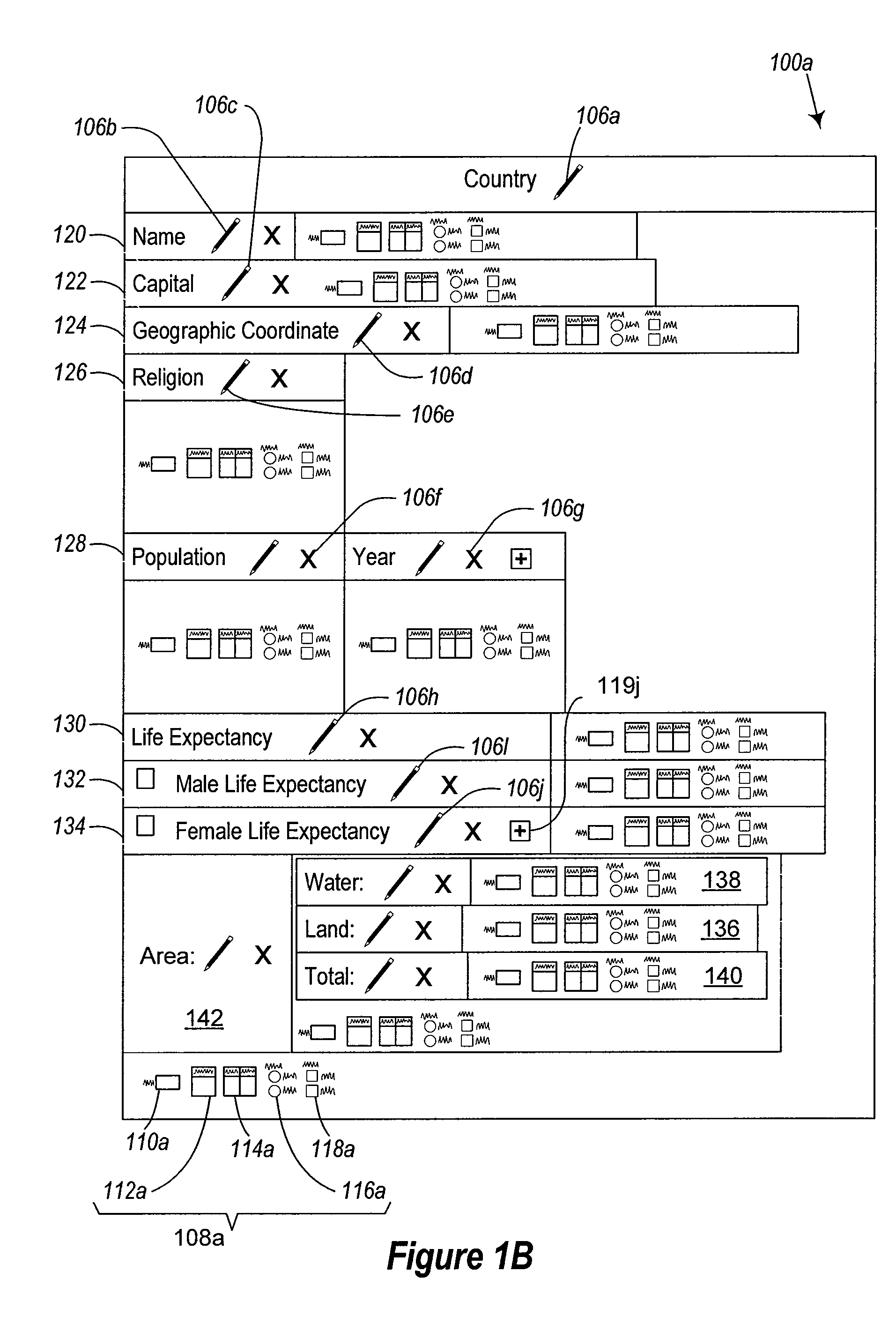Form-based ontology creation and information harvesting
a technology of information harvesting and ontology, applied in the field of form-based ontology creation and information harvesting, can solve the problems of content creation that may not be easily accessible, content may still the less success of a bowl or on, and user may only need a relatively small and specific part of information
- Summary
- Abstract
- Description
- Claims
- Application Information
AI Technical Summary
Problems solved by technology
Method used
Image
Examples
Embodiment Construction
[0018]Some embodiments are directed to allowing a user to define a table, sometimes referred to herein as a tabular form. The user can correlate portions of the form to data items selected from one or more first web pages. This correlation can be used to create an ontology defining relationships between selected data items based on the definition of the tabular form. One or more other web pages can be accessed, and based on a context of the one or more data items in the first web page being similar to a context of the selected data items in the one or more first web pages, one or more similar data items can be extracted from the one or more other web pages. The extracted data items can be correlated to each other in accordance with the ontology defining relationships between the user selected data items. The correlated extracted data items can be output as a user searchable data structure.
[0019]Examples are now illustrated of embodiments and instrumentalities that allow users to gen...
PUM
 Login to View More
Login to View More Abstract
Description
Claims
Application Information
 Login to View More
Login to View More - R&D
- Intellectual Property
- Life Sciences
- Materials
- Tech Scout
- Unparalleled Data Quality
- Higher Quality Content
- 60% Fewer Hallucinations
Browse by: Latest US Patents, China's latest patents, Technical Efficacy Thesaurus, Application Domain, Technology Topic, Popular Technical Reports.
© 2025 PatSnap. All rights reserved.Legal|Privacy policy|Modern Slavery Act Transparency Statement|Sitemap|About US| Contact US: help@patsnap.com



